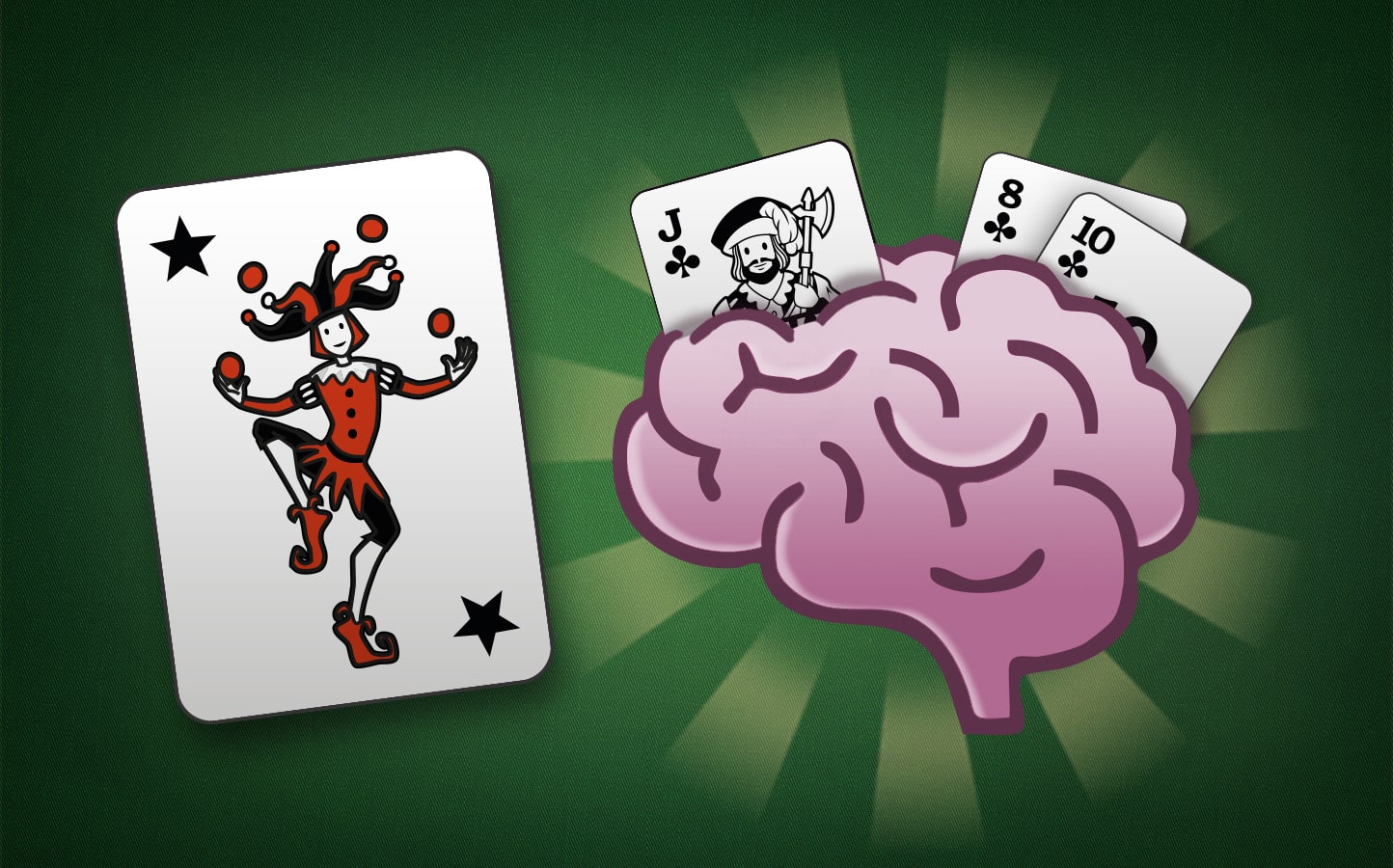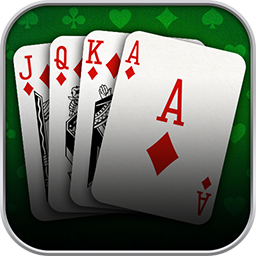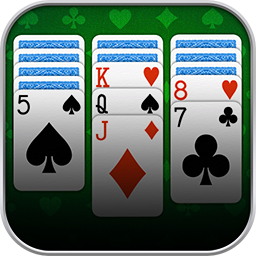Welcome to our lesson all about Rummy tips and tricks. In this lesson, you will learn some key strategies for Rummy that will help you up your game and win more frequently. Because, even though we play for fun, it’s still nice to win!
Using these Rummy strategies requires an understanding of the basic rules of the game. So if you’re more of a beginner, we recommend you check out our page all about the Rummy rules first and play a few rounds of Rummy to familiarize yourself with the game.
But if you’re feeling ready to improve your gameplay, learning the Rummy tricks below will help you read your opponent better, use the cards available to you more effectively, and ensure you make the right decision more often than not.
We’ve collected seven of our essential Rummy tricks and strategies below. So read on and learn how to play Rummy like a pro!
Formulate a Gameplan Early
When you start a game of Rummy, it’s a good idea to already have a rough strategy in your head. For example, are you going to try to collect runs, or are you going to focus on sets? Are you going to go all out and try to discard all your cards as quickly as possible? Or are you going to play more defensively and block your opponents by picking up cards you think they need and discarding cards they don’t?
If you don’t have a rough gameplan from the start, it can lead to a more scattergun approach where you end up with cards in your hand that you might not be able to use, or discarding cards that you later need.
Just remember, if your gameplan isn’t working, it might be time to try a new Rummy strategy! Which leads us on to our next tip…
Be Prepared to Adapt
The best Rummy players are able to adapt during the course of the game and switch to a different strategy if their original gameplan isn’t working. So if you find that your initial plan isn’t going the way you’d hoped – perhaps you’re not getting the cards you need, or maybe you suspect that your opponent is closer to using all their hand cards quicker than you anticipated – be willing to adjust based on the course of the game.
Rummy is a dynamic game, particularly when playing with more than two players, so flexibility is key.
Watch Your Opponent’s Moves
An important Rummy trick is to not only focus on your own cards, but also to keep an eye on what your opponents are doing. Try to keep track of what cards they are picking up and discarding.
The cards your opponents are picking up from the discard pile will give you clues about what sets or runs they might be trying to assemble. And the ones they are discarding will tell you what cards that they have no use for.
Keeping track of your opponents’ cards can be difficult, especially when playing three or four player Rummy, but it’s an essential trick if you want to stay ahead of your opponents.
Discard Cards Your Opponent Doesn’t Need
Following on from the previous tip, if you’re keeping track of your opponents’ movements, you should have a rough idea of the cards they need and don’t need. You can throw a spanner in their works by discarding cards they don’t need, and thus making cards around the top of the discard pile less useful for them.
For example, if you notice your opponent keeps discarding cards of a particular suit, you could also discard cards from this same suit, as it is likely they don’t need that suit. This is considered a more defensive Rummy strategy.
Conversely, as well as discarding cards that your opponent doesn’t need, you can also keep hold of cards that your opponent does need if you want to frustrate their gameplan. If you have an idea of what cards your opponent could use, keep these cards in your hand a little longer. This is particularly important if your opponent is yet to play their first meld.
If your opponent has already played their initial meld, you should of course still avoid discarding cards they could immediately add to any melds. This is an especially important Rummy strategy if you haven’t played your initial meld and the other player only has a few cards in their hand.
Discard High-Value Cards Early
A key thing to remember about scoring in Rummy is that if you lose a round, you will lose points equal to the total value of your hand cards. So if you have lots of high value cards in your hand, for example Face Cards, Aces, or Tens, when an opponent finishes the round, you stand to lose a lot of points!
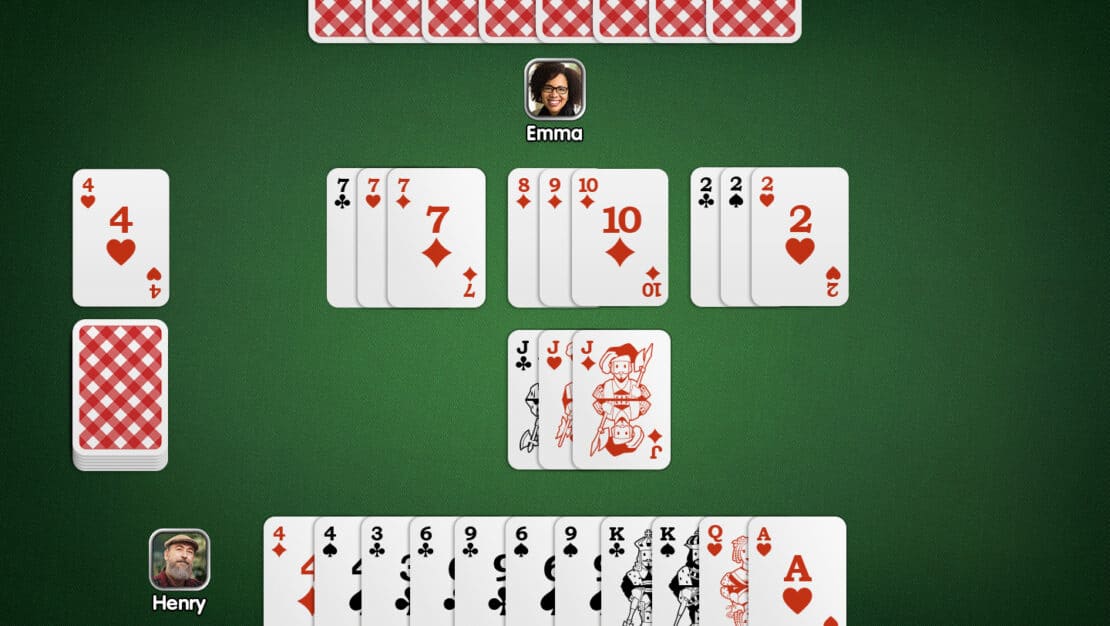
You need to make a risk / benefit calculation based on the cards in front of you. For example, you might have a Nine, Ten, Queen and King of the same suit, and you just need a Jack to make a five card sequence. A high risk – high reward Rummy strategy would be to keep these cards and hope you draw the required Jack, knowing that if an opponent ends the round, these four cards will cost you 39 points. While a more cautious Rummy player might opt to discard some of these higher value cards sooner rather than later if they can’t immediately use them in a meld.
Pick Selectively From the Discard Pile
In the same way that you will be watching what your opponent puts down and picks up from the discard pile to try and figure out their gameplan, your opponents may well be doing the same to you.
That’s why it’s smart to be strategic when it comes to picking up from the discard pile. Every time you pick a card from the discard pile, you surrender a bit of information about your hand to your opponents. And they might use that information against you later in the game.
So one important Rummy tip is to only take the card from the top of the discard pile if it is going to significantly help your hand. Otherwise, it may be wiser to draw from the stock pile.
Be Aware of Your Opponent Finishing the Round
As we’ve said throughout this lesson, keeping track of your opponents’ behaviour is an essential part of any Rummy strategy. And the longer a game of Rummy goes on, the more you need to keep an eye on whether an opponent is close to melding all their cards into sets and runs and winning the round.
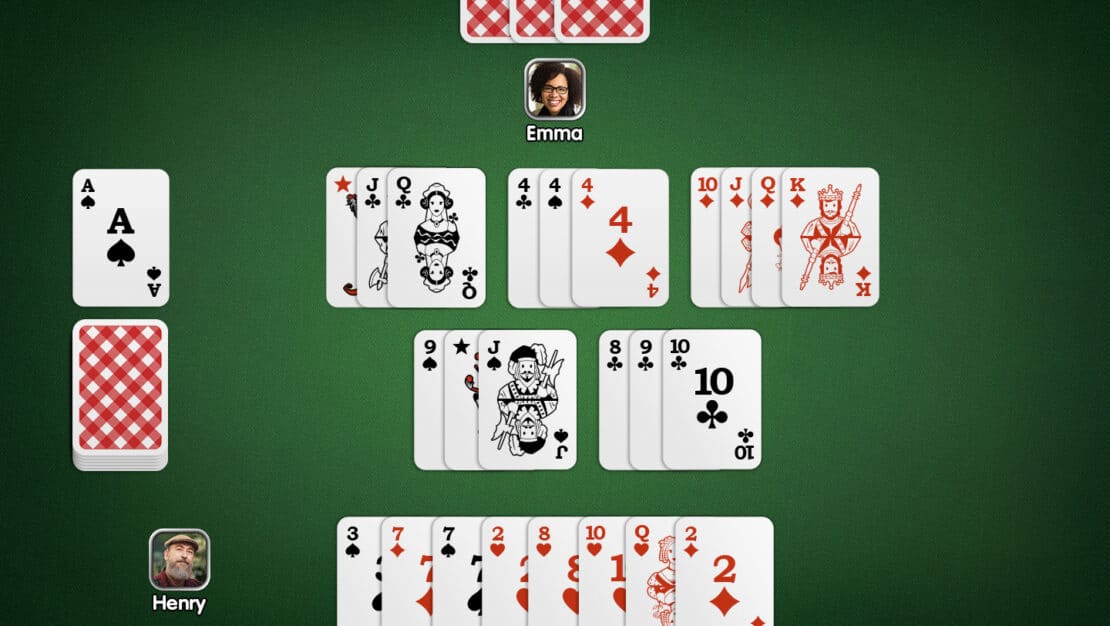
If you notice that your opponent only has a few hand cards left, you may need to adapt your game in response. If you are also close to emptying your hand, you might start playing more aggressively to try and acquire the final cards you need. If you are nowhere near emptying your hand, you might need to cut your losses and start discarding your highest value cards, to minimize your points loss when your opponent does end the round.
So there we have it: our top Rummy tricks and strategies to help you improve your game. We hope you found this lesson useful. Why not use the Rummy strategies you’ve learnt today and play a round of Rummy online at the Palace? Or alternatively, head back to our Rummy lessons to learn more.
